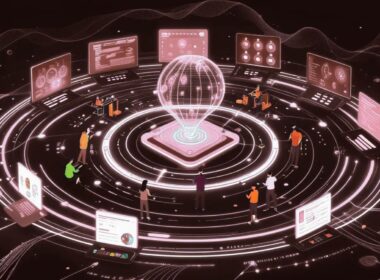A design consultant is involved in creating a design and bringing the design to life. These responsibilities cover a wide range of design sectors including marketing, interiors, fashion, and graphics.
The ideal design consultant is a champion of aesthetics and can see the commonplace in an entirely new perspective. The consultant is capable of melding essential elements of form, function, and aesthetics across varied design sectors.
You should be able to see invisible patterns where common eyes can only see colors. You should be able to visualize a design and how it will be appreciated (or not) in the litmus test of the end user.
Above all, the design consultant should be able to create lasting impressions with a seemingly endless stream of conscious ideas. At a deeper level, the consultant should be able to tap into the subconscious to interpret what works and what does not when a design is finalized at the table.
Understanding the Role
A design consultant lives by the core principles of creativity, and the same is reflected in how he/she approaches the role. An end design is often like a resolved formula. The consultant should not only be able to interpret the differing variables of the formula but also, if need be, create it.
To achieve this, the consultant has to be dynamic, both internally and externally. The consultant should be able to identify glitches in the presentation and design at a glimpse and devise ways to set them straight. You should have the aptitude to ask questions, where it matters, and access the heart of the design without an issue.
Your day-to-day responsibilities will include working on both new and existing designs. You will have to be articulative, in how you would like the design to perform, and set out the avenues to achieve this final objective.
Key Responsibilities
As a design consultant, you must be apt to handle the following key responsibilities.
- You will be evaluating the clients’ spaces or platforms to understand their needs. You must have an intuitive idea of what is expected from a design, even though this requirement may or may not be articulated in the project brief. On that self-same note, you should have the ability to surprise clients and your associates with insights that are obvious but were unspoken until then.
- You should have a free hand at crafting prototypes, drawings, and projections of the final design using advanced digital design tools. The tools should be familiar like the lines on your hand, and you must be able to create a prototype even from a description that leaves much to your design judgment.
- As a design consultant, you will be responsible for selecting the appropriate color schemes, themes, and layouts from a seemingly endless array of options. You should be able to understand what matters in the expected design and bring that idea to life without unnecessary delay.
- As a design consultant, you should be comfortable in a collaborative setup. You will be needed to be a part of a team, and also lead the team to achieve the objectives. In other words, you should have ample team-handling skills to be able to deliver under pressure. You will also have to connect inputs from other team members in coherence with the essential design principles guiding a given project.
- As a design consultant, you are required to be updated on current design trends and how they apply in the context of the project where you will be working. You should be aware of the latest in your preferred field of design, whether it’s fashion, product design, or website design.
- The design consultant should have an acumen for marketing and an understanding of how a product can be made acceptable en masse. You should have critical input on how the marketing team should approach the product, and be ready to add your suggestions whenever needed.
- Finally, the design consultant should be able to convey the client’s vision from the drafts to the final result. You should be able to communicate what the client needs to see in the design, and that the result is entirely satisfactory. There cannot be any dimension for miscommunication in a complete design, and you should be able to achieve it.
Requirements for the Role
- You must have a Bachelor’s degree in relevant design disciplines.
- You should have a thorough understanding of the licensure criteria for interior design consultants, wherever applicable.
- You must be able to showcase an excellent portfolio to prove that you are capable of the role.
- You will be tried to understand whether you have a detailed understanding of color theory, design themes, layout principles, and styles.
- You should be a dedicated creator and have efficient organizational capabilities. You will be also tried for your attention to detail and time management skills.
- You should have experience in managing budgets effectively.
Professional Development and Advancement
The job role has ample scope for professional development and advancement. You will be provided with ongoing learning opportunities to stay abreast of design innovations. You will be at the forefront of a fast learning curve, that will involve the utilization of newer tools and fresh design principles.
Furthermore, the job role also involves networking with other design professionals for both collaborative and freelance opportunities. If you are the right individual, the job will take you to places that you have imagined in your best career dreams.
Concluding Insights
Design consultants have an overarching impact in achieving the integration of aesthetics, functionality, and form within various design contexts. A design consultant understands why a design matters and why it does not and can impart this knowledge in the final execution.
The design consultancy field is constantly evolving in response to technological advancements and shifting consumer preferences. Despite the constant change, a design consultant can adhere to core design principles and understand their modifications under different contexts.
Codewave is a design thinking led digital transformation company enabling organisations with playful innovation using AI & ML, IoT & Edge, AR, VR, Cloud, Blockchain, and Data.







